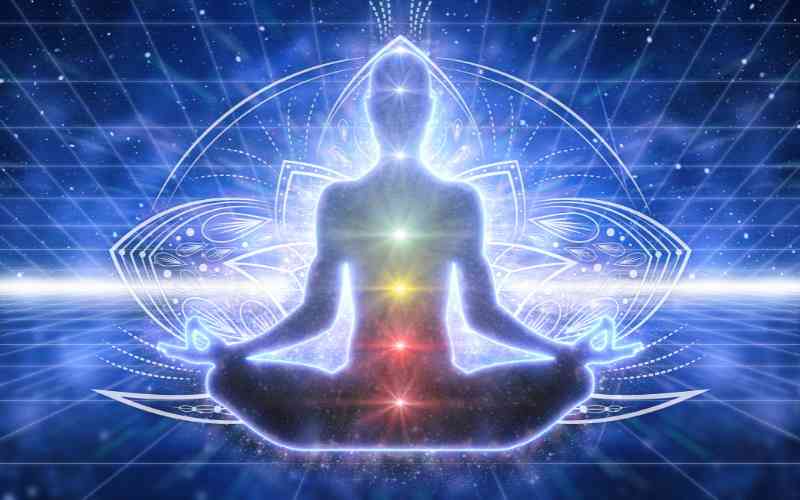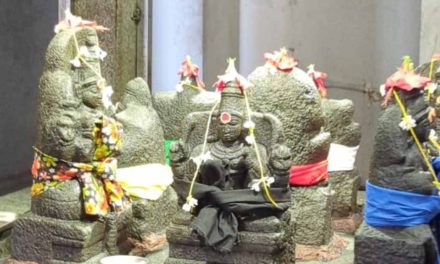The Atmabodha Upanishad is one of the ancient Hindu scriptures that reveals the nature of the inner self (Atman) and the supreme reality (Brahman). It is a short text of 18 verses that belongs to the Rigveda, one of the four Vedas that form the foundation of Hindu philosophy. ¹²
The word Atmabodha means “State of knowledge of the inner self” or “Self-knowledge”. ³ It is also the name of another text attributed to Adi Shankara, a famous teacher of Advaita Vedanta, a school of Hindu philosophy that emphasizes the nonduality of Atman and Brahman.
The Atmabodha Upanishad teaches us how to awaken our true self by realizing our identity with Brahman, who is the source of all existence, consciousness, and bliss. It also guides us on how to overcome ignorance (Avidya) and illusion (Maya) that veil our true nature and cause us to suffer in the cycle of birth and death (Samsara).
The Hymn to Vishnu
The Atmabodha Upanishad begins with a hymn to Vishnu, one of the principal deities of Hinduism and an aspect of Brahman. The hymn praises Vishnu as Narayana, Purusha, and Om, who liberates the yogi from Samsara. It also mentions some of his attributes and epithets, such as:
- The conch (Shankha), which symbolizes sound, space, and creation
- The discus (Chakra), which symbolizes mind, time, and destruction
- The mace (Gada), which symbolizes intellect, power, and preservation
- The son of Devaki (Krishna), who is an incarnation of Vishnu and a teacher of the Bhagavad Gita
- The slayer of Madhu (Madhusudana), who is a destroyer of evil forces
- The lotus-eyed one (Pundarikaksha), who is a source of beauty and grace
- The infallible one (Achyuta), who is a protector and supporter
The hymn also declares that by chanting the mantra Om Namo Narayanaya (I bow to Narayana), one can attain Vaikuntha, the abode of Vishnu, where there is no sorrow or fear.
The Meditation on Brahman
The Atmabodha Upanishad then shifts its focus from Vishnu to Brahman, who dwells in the lotus of the heart. Brahman is described as:
- The Lord of Brahman (Brahmanya), who is the ruler of all creation
- The effulgent one (Tejasvi), who is radiant with light
- The consciousness (Prajna), who is aware of everything
- The wisdom (Prajnana), who is the essence of knowledge
- The immortal one (Amrita), who is beyond death
The Upanishad instructs us to meditate on Brahman as our own self, who is identical to Vishnu. By doing so, we can attain the ultimate heaven (Svarga), where there is no death or rebirth, and where we can enjoy eternal bliss. We can also become immortal ourselves, as we realize our true nature as Brahman.
The Discourse on Atman
The rest of the Atmabodha Upanishad consists of a discourse by Brahman himself, who speaks in the first person and explains his various aspects. He says that he is:
- Free from Maya and Gunas, which are the causes of illusion and diversity
- Beyond name and form, which are the products of Maya
- Without attributes or qualities, which are derived from Gunas
- Without action or change, which are dependent on name and form
- Without birth or death, which are related to action and change
- Without beginning or end, which are limitations of time
- Without parts or divisions, which are restrictions on space
- Without cause or effect, which are modes of logic
- Without duality or multiplicity, which are illusions of perception
- Without bondage or liberation, which are states of mind
He also says that he is:
- The witness of all, who observes everything without being affected
- The knower of all, who knows everything without being limited
- The enjoyer of all, who experiences everything without being attached
- The controller of all, who governs everything without being involved
- The creator of all, who manifests everything without being exhausted
- The sustainer of all, who supports everything without being burdened
- The destroyer of all, who dissolves everything without being violent
- The giver of all, who bestows everything without being partial
- The remover of all, who eliminates everything without being cruel
- The revealer of all, who enlightens everything without being hidden
He also says that he is:
- The self of all, who is the essence of every being
- The bliss of all, who is the source of every joy
- The light of all, who is the illumination of every knowledge
- The sound of all, who is the vibration of every word
- The taste of all, who is the flavor of every substance
- The smell of all, who is the fragrance of every object
- The touch of all, who is the sensation of every contact
- The form of all, who is the shape of every appearance
- The color of all, who is the hue of every vision
- The space of all, who is the dimension of every existence
He also says that he is:
- One without a second, who is non-dual and indivisible
- Infinite and eternal, who is boundless and timeless
- Pure and perfect, who is immaculate and complete
- Peaceful and blissful, who is serene and happy
- Conscious and aware, who is sentient and cognizant
- Existence and reality, who is being and truth
He concludes by saying that he is Atman, the inner self, and Brahman, the supreme reality. He also says that whoever knows him as such becomes free from ignorance and attains liberation.
Conclusion
The Atmabodha Upanishad is a concise and profound text that reveals the nature and identity of our true self. It teaches us how to awaken our self-knowledge by meditating on Brahman, who dwells in our heart and pervades everything. It also guides us on how to overcome ignorance and the illusion that obscures our true nature and causes us to suffer. By following its teachings, we can realize our oneness with Brahman and attain immortality and bliss.
Works Cited:
(1) Atmabodha Upanishad – Wikipedia. https://en.wikipedia.org/wiki/Atmabodha_Upanishad
(2) Atma bodha – Wikipedia. https://en.wikipedia.org/wiki/Atma_bodha
(3) Atmabodha Upanishad – Vyasa Mahabharata. https://www.vyasaonline.com/atmabodha-upanishad/





